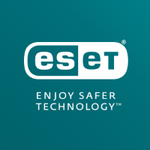What Is Endpoint Detection And Response (EDR) Software?
One kind of security solution called Endpoint Detection and Response (EDR) software is made to identify and address online threats on endpoints, which include servers, laptops, and desktop computers. In order to detect and prevent possible security breaches before they have a chance to compromise the network, it monitors and analyzes endpoint behavior in real-time.
The capacity of EDR software to gather comprehensive information from endpoints, such as system logs, network traffic, and process activity, is one of its primary characteristics. To find questionable or malevolent activity, this data is examined using sophisticated methods like behavioral analytics and machine learning. To offer a complete defense against online threats, EDR software can also interface with other security tools and systems, like intrusion detection/prevention systems and firewalls.
EDR software has response features in addition to threat detection. This includes the capacity to gather forensic information, isolate infected endpoints from the network, and carry out corrective measures like removing or quarantining malicious files. Additionally, some EDR solutions have automated response features that enable a more rapid and effective reaction to threats.
A user-friendly interface, customisable alerting and reporting, and interaction with your current security architecture are all critical considerations when choosing EDR software for your company. Along with prompt and efficient reaction capabilities, it should also offer ongoing monitoring and detection. Ultimately, the correct EDR software can help your company defend against today's advanced cyberthreats by giving it more visibility and control over endpoint security.
What Are The Recent Trends In Endpoint Detection And Response (EDR) Software?
Since it assists in identifying and addressing attacks at the endpoint level, Endpoint Detection and Response (EDR) software is an essential component of any organization's cybersecurity strategy. The market for EDR software is always shifting along with technology and cyberthreats. Understanding the most recent developments in this field is crucial to choose the best EDR solution for your company.
1. Combining Machine Learning (ML) And Artificial Intelligence (AI): The combination of AI and ML capabilities is one of the biggest advancements in the EDR software industry. Traditional signature-based detection techniques are no longer sufficient due to the increasing complexity and sophistication of cyber threats. In order to detect and react to threats in real-time, EDR solutions with AI and ML capabilities can scan enormous volumes of data and spot anomalies. As more EDR manufacturers integrate AI and ML into their products to improve threat detection and response, this trend is anticipated to continue.
2. EDR Solutions That Are Cloud-Based: The need for cloud-based EDR solutions has increased along with the use of cloud computing. For companies of all sizes, these solutions provide a number of advantages, including scalability, affordability, and simplicity of use. Additionally, as remote work becomes more common, businesses are searching for EDR solutions that can safeguard their endpoints whether employees are working remotely or in the office. Because they can monitor and safeguard endpoints from any location with an internet connection, cloud-based EDR systems are ideal for this.
3. Conversion To Managed EDR Services: Many firms, particularly those with limited IT resources, may find it difficult to manage EDR solutions. Because of this, a lot of companies are using Managed EDR services, in which a third-party supplier oversees and administers the EDR software and notifies the company of any possible hazards. Small and medium-sized firms that place a high value on cost savings and professional assistance are especially fond of this trend.
4. Pay Attention: To analytics of user and entity behavior (UEBA) Because it allows businesses to identify behavioral irregularities instantly, UEBA technology is becoming more and more well-liked in the EDR industry. EDR solutions with UEBA capabilities can detect and address threats that conventional signature-based techniques would miss by examining user and entity activity. It is anticipated that more EDR solutions would provide sophisticated UEBA features to improve their threat detection capabilities, continuing this trend.
5. A Focus On Orchestration And Automation: With greater automation and orchestration capabilities, EDR solutions are evolving. In order to lessen the impact of an attack, these functionalities allow enterprises to automate threat responses, such as isolating an infected endpoint or stopping a malicious process. Security personnel can concentrate on more important duties by using automation and orchestration to expedite and simplify threat detection and response.
Benefits Of Using Endpoint Detection And Response (EDR) Software
Software called Endpoint Detection and Response (EDR) is an essential tool for contemporary companies trying to safeguard their endpoints and fend off new online dangers. With so many advantages, EDR software is a must-have investment for any business. We'll go over the main advantages of utilizing EDR software in this buyer's guide to help you choose the best option for your company.
1. Proactive Threat Detection And Response: The capacity of EDR software to proactively identify and address possible threats is one of its main advantages. EDR software use cutting-edge methods including behavioral analysis, machine learning, and artificial intelligence (AI) to spot questionable activity and possible threats, in contrast to conventional antivirus programs that depend on signature-based detection and blocking. By taking a proactive strategy, you may minimize the impact of cyberattacks on your company by ensuring prompt threat identification and response.
2. Complete Visibility And Control: EDR software gives you detailed information about every endpoint on your network. It gives you a thorough understanding of the security posture of your network by tracking and gathering information on endpoint activity, such as file modifications, network connections, and user logins. You can find weaknesses, spot malicious activity, and react fast to any possible risks with this visibility.
3. Real-Time Incident Response: In the case of a cyberattack, every second matters in the fast-paced digital world of today. Your security team can swiftly analyze and address issues as they arise thanks to EDR software's real-time event response features. EDR software minimizes possible damages by assisting you in promptly and effectively mitigating threats through customisable playbooks and automated response activities.
4. Better Endpoint Performance: Because EDR software has a proactive security stance, it may identify and eliminate possible threats before they have a chance to do any serious harm. This helps your endpoints operate better while also strengthening your organization's security posture. EDR software enables your endpoints to operate at their best by lowering the frequency of security events, which boosts overall productivity.
5. Compliance And Regulatory Requirements: Strict compliance and regulatory requirements for data security and protection are present in many businesses. Through ongoing endpoint activity monitoring and reporting, EDR software assists you in meeting these criteria. It is simpler to prove compliance and stay out of expensive fines when thorough security reports and audit trails are produced.
6. Cost Savings: Over time, purchasing EDR software might result in significant cost savings for your company. EDR software lowers the chance of a successful cyberattack with its proactive threat detection and prevention features, protecting you from possible monetary losses, harm to your reputation, and expensive recovery procedures.
Important Factors To Consider While Purchasing Endpoint Detection And Response (EDR) Software?
Endpoint Detection and Response (EDR) software is crucial for safeguarding your company's endpoints from sophisticated cyberthreats. However, selecting the best solution for your company might be difficult due to the abundance of options accessible in the market. The following crucial elements should be taken into account when buying EDR software in order to assist you in making an informed choice:
1. Detection And Response Capabilities: EDR software's main objective is to identify and address sophisticated threats. To spot questionable activity and any dangers, it should be equipped with strong detection features like behavioral analytics, machine learning, and artificial intelligence. To swiftly contain and eliminate any threats, it should also offer real-time response and cleanup options.
2. Integration And Compatibility: EDR software should work well with your current infrastructure and interact easily with your security solutions, including threat intelligence systems, firewalls, and SIEM. This eliminates any security flaws or redundancy and guarantees a comprehensive and well-coordinated approach to endpoint protection.
3. User-Friendly Interface: To make endpoint management and monitoring easier, the EDR software should have an intuitive user interface. In addition to comprehensive reports and insights into security issues, it should offer a unified dashboard for viewing and managing all endpoints.
4. Scalability: Your EDR software should adapt to the changing endpoint environment of your company. In order to handle more endpoints and workloads without sacrificing speed, it should include scalability characteristics.
5. Cost And License: Because EDR software can be a substantial investment, it's critical to thoroughly evaluate the pricing and license arrangements. While some applications may have a subscription-based business model, others may charge per endpoint. Analyze your spending and select a solution that meets your company's requirements.
6. Vendor Support And Reputation: Selecting a trustworthy vendor with a solid endpoint security record is essential. To learn more about their assistance and service, look for ratings and reviews from previous customers. Make sure they also provide prompt and trustworthy customer service for any technological problems or questions.
7. Compliance And Regulatory Standards: The EDR software should meet any particular compliance and regulatory standards that your company may have, depending on your industry. Make sure the software satisfies all requirements and standards before making a purchase in order to protect your data and fulfill compliance duties.
What Are The Key Features To Look For In Endpoint Detection And Response (EDR) Software?
Because they are the main targets of cyberattacks, endpoints in a network are susceptible to malware infections, data breaches, and other security risks. By continuously observing and reacting to questionable activity, Endpoint Detection and Response (EDR) software is made expressly to defend endpoints against these attacks.
The following are the main characteristics to consider while selecting the best EDR software for your company:
1. Real-time Threat Detection and Response: To guarantee that any questionable activity is promptly recognized and dealt with, the software should be able to identify and react to threats in real-time.
2. Advanced Threat Protection: To guard against complex threats, look for features like advanced anti-phishing capabilities, behavior-based analysis, and protection against malware and ransomware.
3. Endpoint Visibility: All endpoints in your network, such as PCs, laptops, mobile devices, and servers, should be fully visible through the program. This will assist you in monitoring endpoint behavior and spotting possible vulnerabilities.
4. Centralized Management: You should be able to monitor and control all endpoints from one place with the software's centralized management console. This will provide uniformity in security policies across all endpoints and save time and effort.
5. Automated Response And Remediation: Without human assistance, the program should be able to react and eliminate threats automatically. This will shorten the reaction time and lessen the effect of an attack.
6. Integration With Other Security Tools: Seek out EDR software that can work with the security tools you already have, like firewalls, antivirus programs, and SIEMs. This will improve the overall security of your endpoints and offer a multi-layered strategy.
7. Comprehensive Reporting And Analytics: To assist you in understanding the security posture of your endpoints, the software should offer comprehensive reports and analytics. This will make it possible for you to find any security flaws and take preventative action to close them.
8. Scalability: The program should be able to accommodate a lot of endpoints without experiencing any performance issues. For expanding businesses and those with a large number of endpoints, this is crucial.
9. User-Friendly Interface: Search for EDR software that has an intuitive user interface that is simple to use and comprehend. Training and utilizing the program will be quicker and easier as a result.
10. 24/7 Customer Support: Finally, pick an EDR software vendor with round-the-clock customer service. This will reduce the possibility of downtime by guaranteeing that any technical problems or issues are swiftly resolved. In conclusion, to guarantee thorough endpoint security, keep an eye out for these essential qualities while evaluating an EDR program for your company. Keep in mind that protecting your endpoints from cyber threats can be greatly aided by the use of appropriate EDR software.
Why Do Businesses Need Endpoint Detection And Response (EDR) Software?
For companies of all sizes and sectors, Endpoint Detection and Response (EDR) software is a vital tool. To defend your endpoints such as servers, laptops, and desktop computers against security lapses and cyberattacks, it offers sophisticated threat detection, incident response, and remediation capabilities. Because they serve as the points of entry into your network, endpoints are the main targets of hostile actors in today's digital environment.
Because cybercriminals are always changing their strategies, standard antivirus and anti-malware programs are unable to identify and stop advanced attacks. EDR software is useful in this situation. Businesses may proactively detect and address possible cyberthreats, regardless of how sophisticated or complex they may be, by using EDR software.
This is accomplished by using an integrated strategy that detects and stops harmful activity on endpoints by combining machine learning, behavioral analysis, and real-time monitoring. Additionally, EDR software offers a thorough overview of your endpoints, providing you with important information about your network's security posture. It enables companies to monitor a range of endpoint data, including user activity, network connections, and software and hardware inventories.
By detecting weaknesses and possible attack routes, these insights assist organizations in implementing preventative security measures. Rapid incident response is one of the main advantages of using EDR software. EDR tools can swiftly isolate the compromised endpoint, confine the threat, and start remediation efforts in the event of a security incident.
In the end, this protects companies against possible financial and reputational losses by limiting damage and downtime overall. EDR software can also help with regulatory compliance by offering audit records and comprehensive reports. For companies working in highly regulated sectors like healthcare and finance, this is essential since it helps them comply with regulations and stay out of trouble with the law.
How Much Time Is Required To Implement Endpoint Detection And Response (EDR) Software?
The complexity of your network, the quantity of endpoints, and the degree of customization required all affect how long it takes to deploy Endpoint Detection and Response (EDR) software. The installation procedure often takes a few weeks to many months. Examining your present network and security setup is the first step in putting EDR software into place.
This entails recognizing every endpoint, comprehending how they are configured, and getting a firm grasp on the possible dangers they confront. Depending on the size and complexity of your network, this procedure may take a few days to a few weeks. The EDR software must then be set up to meet your unique network requirements and security guidelines.
This include establishing threat detection guidelines, configuring alarms, and integrating with current security tools and systems. Although the amount of time needed for this stage can vary, it often takes a few weeks to test and fine-tune the configurations. The EDR software must be installed on every endpoint following the completion of the setups. This procedure can take a lot of time, particularly for larger companies with a lot of endpoints.
The deployment process may take a few days to a few weeks to finish. It is essential to carry out comprehensive testing after the program is operational to make sure it is correctly identifying and reacting to threats. Depending on the extent of testing and potential problems, this stage may take several weeks.
EDR software deployment can take four to twelve weeks on average, while bigger and more complicated networks may require longer. Enough time and resources must be set aside for a successful deployment because the software's efficacy depends on correct setup and configuration.
What Is The Level Of Customization Available In Endpoint Detection And Response (Edr) Software?
Software known as Endpoint Detection and Response (EDR) is a crucial instrument for identifying and addressing cyberthreats on endpoints, which include servers, laptops, and desktop computers. It provides cutting-edge capabilities like threat analysis, incident response, and real-time monitoring to safeguard a company's network and private information. The degree of customisation offered by EDR software is one of the primary characteristics that distinguishes it from conventional antivirus software. High levels of flexibility and customization are provided by EDR solutions to assist enterprises in meeting their particular security requirements.
Organizations can modify EDR software to meet their unique needs in the following ways:
1. Customizable Policies: EDR software enables companies to establish policies that specify the steps it takes in the event that it detects potential threats. These guidelines can be altered to meet the organization's unique security requirements, compliance standards, and risk tolerance. To stop cyberattacks, companies can, for example, set up policies that restrict access to particular websites or prohibit particular download types.
2. Flexible Deployment Options: The versatility of EDR software's deployment options is another benefit. Companies have two options for implementing EDR: on-premises, where the program is set up on the company's servers, or cloud-based, where the service provider hosts and controls the EDR for them. Because of this flexibility, businesses can select the deployment strategy that best suits their security and IT infrastructure needs.
3. Custom Dashboards: EDR software includes dashboards that may be customized to show the endpoint security posture of an organization. Companies can decide which KPIs, including the quantity of threats identified, stopped, and fixed, to show on the dashboard. Organizations may swiftly take the required actions and obtain a comprehensive picture of their security state thanks to this modification.
4. Integration With Other Security Products: To give a more comprehensive picture of an organization's security posture, EDR software can be connected with other security products like vulnerability scanners and SIEM (Security Information and Event Management). Businesses can detect and address threats more quickly and effectively thanks to these partnerships.
5. Customized Warnings And Notifications: To notify companies about possible security risks, EDR software offers customisable warnings and notifications. To guarantee that they are informed as soon as any significant security incidents occur, organizations can specify the kind and level of notifications they would like to receive.
Which Industries Can Benefit The Most From Endpoint Detection And Response (EDR) Software?
Software called Endpoint Detection and Response (EDR) is an essential tool for any company trying to improve its cybersecurity posture. This cutting-edge solution adds an additional degree of defense against online threats by monitoring and responding to security occurrences on endpoints. All sectors can profit from EDR software, however some can take advantage of its features more than others. Let's examine these sectors in more detail to see why they stand to benefit the most from the use of EDR software.
1. Services For Finance: Because the financial services sector handles sensitive data, including financial records and personal information, it is a potential target for cyberattacks. EDR software can be quite helpful in preventing thieves from accessing this private data. Financial institutions can reduce the risk of data breaches by using EDR to identify and address cyberthreats instantly. EDR systems can also monitor user activity and identify questionable conduct, thwarting insider threats.
2. Medical Care: Because the healthcare sector stores so much sensitive and personal data, it is also a potential target for cyberattacks. Healthcare institutions can utilize EDR software to identify dangers and take action before they have a chance to cause harm. By offering real-time monitoring and incident response capabilities, it can also help with compliance with stringent standards, such HIPAA. Critical patient data is always available because to EDR software's capacity to identify and thwart ransomware threats.
3. Government: Because government entities hold sensitive data, they are a prime target for cybercriminals. EDR software can assist government agencies in preventing cyberattacks and safeguarding sensitive confidential information. Government organizations can utilize EDR to keep an eye on suspicious activity and harmful attacks and take appropriate action before they do serious harm. To ensure the safety and security of government systems and data, EDR software can also assist in the investigation and remediation of security incidents.
4. Instruction: A great deal of sensitive data, such as financial records, academic records, and personal information, is kept in storage by educational institutions. Schools and universities can safeguard this data from online dangers with the aid of EDR software. Educational institutions can detect any attacks and take prompt action by using EDR to monitor and analyze network traffic. Additionally, in the event of a security problem, EDR can offer forensic data to aid investigations.
5. Online Shopping: Because sensitive client data and online transactions are at risk, the eCommerce sector is a potential target for cyberattacks. EDR software can assist eCommerce companies in keeping an eye on any threats and taking appropriate action to protect consumer data and avoid financial loss. eCommerce companies can protect their online transactions by using EDR to identify and halt fraudulent activity.
Conclusion
Conclusion: Investing in an EDR software solution is essential for every organization's cybersecurity defense, as demonstrated by extensive research and analysis of the available solutions. EDR software provides complete protection against contemporary and complex cyberthreats with cutting-edge features and capabilities that surpass those of classic antivirus programs.
We have covered the most important aspects of selecting an EDR software in this buyer's guide, including price models, compatibility with current systems, integration possibilities, and deployment alternatives. It's critical to thoroughly assess these elements and match them to the budget and particular requirements of your company. The best choice for [insert target audience] is [insert name of highly rated EDR software], according to our research.
For businesses aiming to improve their cybersecurity posture, its [insert noteworthy features], intuitive UI, and solid track record make it a dependable and efficient option. It is important to note, though, that every firm has different security requirements, so what works for one might not work for another.
To identify the ideal fit for your company, we therefore strongly advise you to carry out your own study and demos. Purchasing EDR software is a crucial choice that can significantly affect the security posture of your company. We really hope that this buyer's guide has given you insightful information and assisted you in making a wise choice. Prioritizing cybersecurity and remaining proactive in thwarting cyberattacks are essential given the always changing threat landscape.












